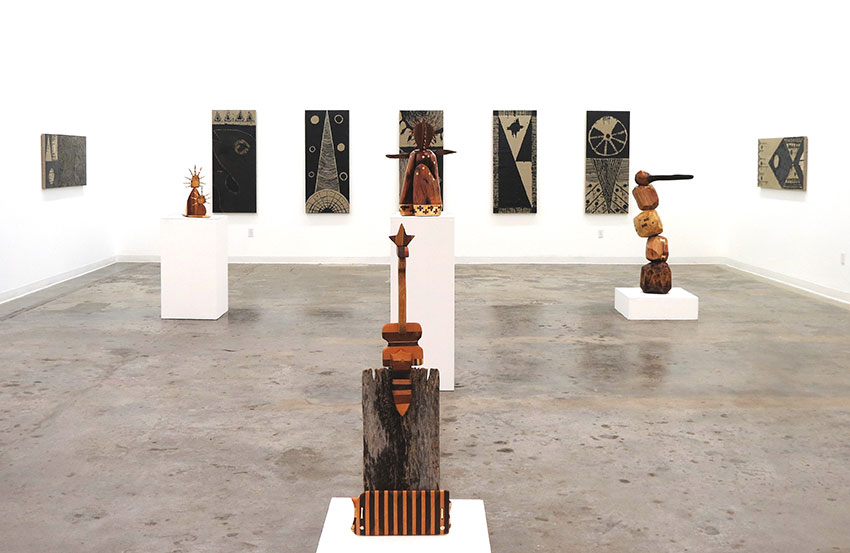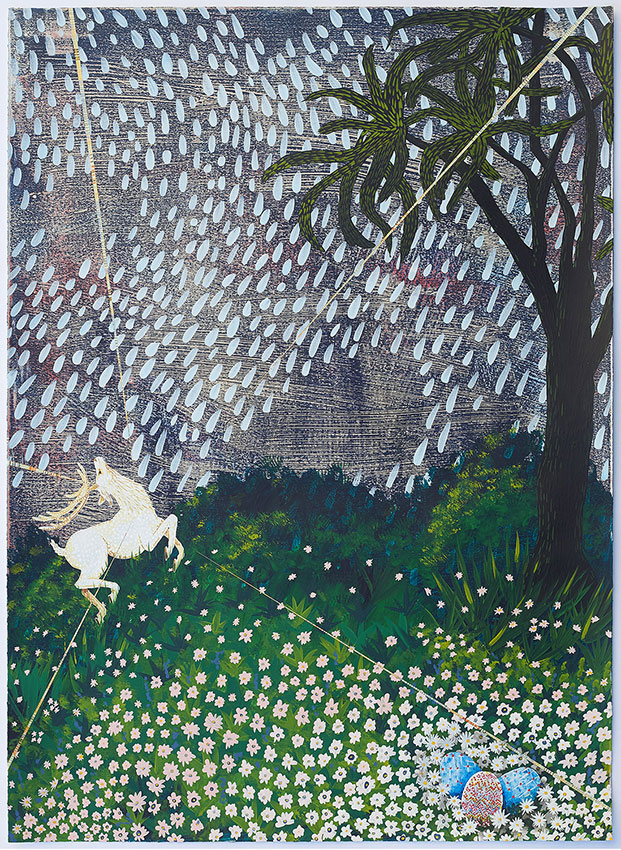

REVIEW
Lorenzo Hurtado Segovia: Vida, pasión y muerte
By Shana Nys Dambrot
Issue 37
In Lorenzo Hurtado Segovia, we have an artist embracing change in his practice, without ever weighing anchor on what came before. CB1 is showing new works from four distinct series, inviting viewers to discover the plentiful interconnectivities for themselves. It’s a warm, generous, engaging, mysterious exhibition, by turns somber and witty, deftly crafted, quirky, spiritual, private and timeless. It’s part of the Pacific Standard Time family, but this is more than a Latinx moniker; label, because in the case of Hurtado Segovia, that PST heritage exerts a salient and specific influence on his content, processes and materials. Chiefly centered around iconography and folk-infused rituals of early Christianity, Segovia’s paintings on paper set a tone of dark whimsy, telegraphing their allegorical character even to those unfamiliar with the imagery. For example, the white stag in Pushing Daisies (Resurrection Painting), echoes the Unicorn Tapestries, Biblical references and embodies a certain Greco-Roman mythological quality. The prolific, multi-layered, chromatically vibrant palette and textures and rhythmical patterning relate directly to the paper weaving. Festooned with pattern motifs like six-point stars, hearts, candles, mosaics, flowers and wheels, the paintings on paper are set off by the overtly reliquary quality of the coffin cover for which the entire show is named, lovingly embroidered and beaded, and another example of Segovia’s penchant for hand-crafted textile based sculpture.
 Lorenzo Hurtado Segovia, Pushing Daisies (Resurrection Painting), 2017, acrylic on paper, 35″ x 25″
Lorenzo Hurtado Segovia, Pushing Daisies (Resurrection Painting), 2017, acrylic on paper, 35″ x 25″
The Paleolithic quality of the sand and tar paintings (with materials meaningfully sourced from the La Brea Tar Pits and local beaches) replicate not only the motifs but the substantial qualities of heft, texture and surface of their petroglyphic inspirations. The biggest surprise was the small army of gleaming wood sculptures. Abstract, yet always bordering on the figurative, they radiate a warmth and display a jaunty stylization reminiscent of totemic folk art. The artist follows the contours of found wood (culled from chopped down city trees) and performs a perfect, patient marquetry to fix all gaps and wounds, bind striations, to contrast wood grains and to tease out figurative resemblances within the same lexicon of holy virgins, gentle monks, old-world ships and tribal altars. The care given their finishes and details speaks to the spiritual energy infused into their making with a pre-Columbian elegance, highlighting a folkloric narrative that’s both universal and totally personal.
